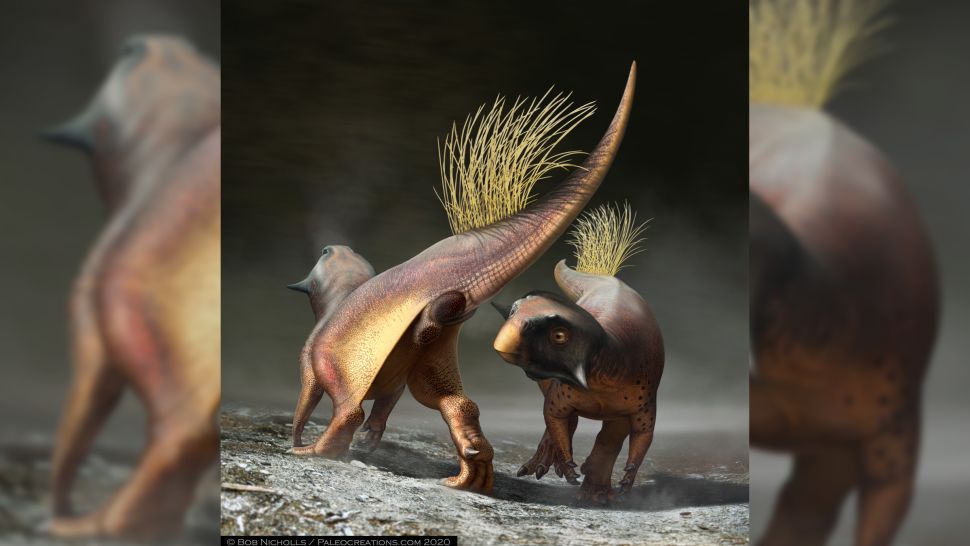
Hey. S'up?
The first dinosaur butthole ever discovered is shedding light where the sun don't shine. The discovery reveals how dinosaurs used this multipurpose opening — scientifically known as a cloacal vent — for pooping, peeing, breeding and egg laying.
The dinosaur's derrière is so well preserved, researchers could see the remnants of two small bulges by its "back door," which might have housed musky scent glands that the reptile possibly used during courtship — an anatomical quirk also seen in living crocodilians, said scientists who studied the specimen.
Although this dinosaur's caboose shares some characteristics with the backsides of some living creatures, it's also a one-of-a-kind opening, the researchers found. "The anatomy is unique," study lead researcher Jakob Vinther, a paleobiologist at the University of Bristol in the United Kingdom, told Live Science. It doesn't quite look like the opening on birds, which are the closest living relatives of dinosaurs. It does look a bit like the back opening on a crocodile, he said, but it's different in some ways. "It's its own cloaca, shaped in its perfect, unique way," Vinther said.
